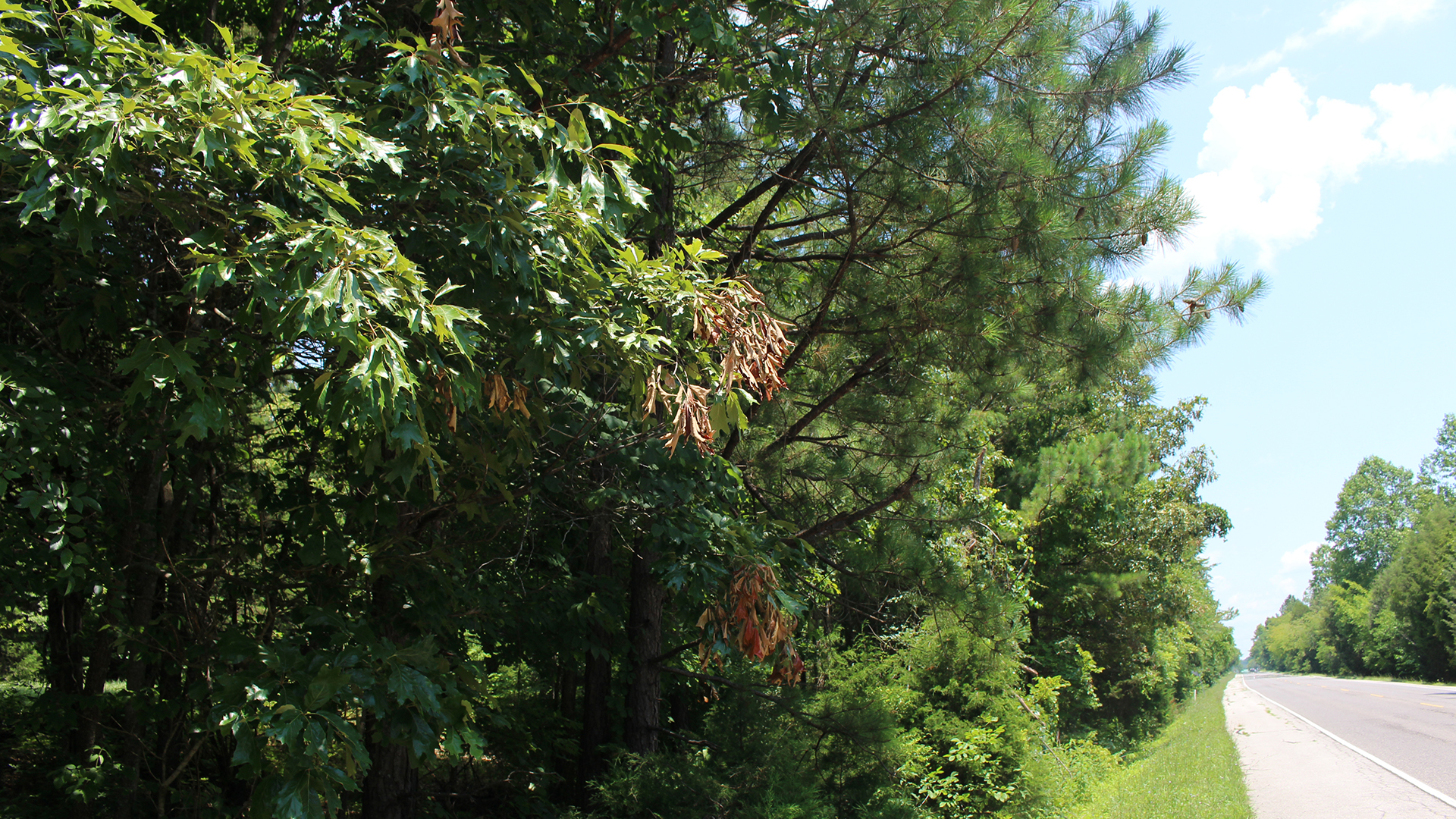On the road leading to the Department of Energy’s Oak Ridge National Laboratory, drivers may notice that many of the green trees lining the entrance to the lab are dappled with brown leaves. At first glance, the sight isn’t extraordinary, as deciduous tree leaves turn hues of oranges and browns before falling to the ground each autumn.
Yet, just weeks past the summer solstice, this phenomenon is out of place and is in fact evidence of another natural occurrence: cicada “flagging.”
This spring, Brood X cicadas emerged from the ground after 17 years burrowed and swarmed across the eastern United States, leaving a trail of exoskeletons and echoes of mating calls. Cicadas emerge in such large quantities to withstand predation and successfully maintain their populations, and trees actually play a key role in their life cycle.
A male cicada attracts a female through a mating call, the sound responsible for cicadas’ shrill hum. After the two mate, the female cicada uses a sharp tubular organ called an ovipositor to make an incision in a tree stem and deposit her eggs there. This incision, however, damages a tree’s vascular system and can cause stems beyond the incision to die and wither, leaving behind brown leaves that resemble flags dangling from the trees.
The eggs then grow into nymphs and make their way to belowground, where they remain dormant for another 17 years.
ORNL ecosystem ecologist Verity Salmon said most trees are able to withstand the light damage inflicted by cicadas. However, it’s possible that trees exposed to other risk factors — such as lightning strikes, drought or fire — or particularly old or young trees could be at an increased risk of suffering from cicada flagging.
“If you only have a few branches, and this sort of flagging represents your whole year’s carbon budget as a young tree, it could be a more severe blow,” Salmon said.
Cicadas are endemic to North America and possess a natural cadence with the trees, meaning it’s unlikely that their mating processes will inflict severe damage to forests.
“The forest as a whole is more complex than any one tree. The tree is a lot more than just the leaves that we pay attention to above ground,” Salmon said. “Trees have stored carbon reserves in sturdy trunks and belowground in roots that we often don’t really think about when we visualize a tree or a forest, so they’re really resilient.”
Despite the frequency of cicada flagging in areas such as East Tennessee, news about flagging is few and far between — perhaps because to many observers, the browning leaves easily blend into the rest of the vegetation.
“If you’re looking for it you notice it, or if you live somewhere and tend to think about the trees a lot, it’s pretty noticeable,” Salmon said.
As a researcher in the lab’s Environmental Sciences Division, Salmon finds herself surrounded by colleagues eager to answer questions and make observations about the natural world, from uncovering the mystery of the reservation’s browning leaves to grabbing binoculars for a better look at a hummingbird nest on campus.
“It’s a good workplace if your coworkers share your interests,” she said. “It blends that professional expertise and personal interests. ESD is a good place for that, and I like it a lot.”
ORNL is managed by UT-Battelle for the Department of Energy’s Office of Science, the single largest supporter of basic research in the physical sciences in the United States. DOE’s Office of Science is working to address some of the most pressing challenges of our time. For more information, please visit energy.gov/science. — Alexandra DeMarco
